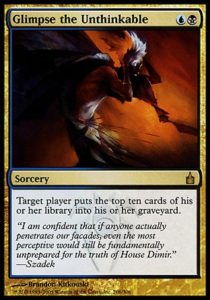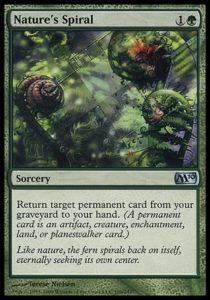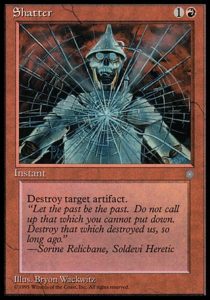Note: this article discusses the most recent Doctor Strange movie. If you know anything about Doctor Strange, either the character or the movie, there are no spoilers. If you’ve intentionally avoided any and all information about it, including watching any trailers or reading any comic books, well, be forewarned you might learn something about the first fifteen minutes of the film. Also, this article is not a review, but uses the film as a vehicle to discuss life and Magic. Go see it for yourself!
This past weekend, I saw Doctor Strange. It was an enjoyable movie, with both references aplenty for the attentive fan and some newer elements making it much easier to put on film. The most fascinating moment, however, happens towards the beginning.

At the onset of the film, Dr. Stephen Strange is a blue-black character. He is deeply selfish and self-absorbed, but most critically, he is a man of science. He lives in an ordered world guided by reason. He is a successful surgeon because he has trained, educated, and molded himself into a successful surgeon. In short, he is a very blue character.
Then, everything he’s ever known fails him. He discovers that there exists a solution to his problem, but it is completely different from everything he’s ever known. The power of magic relies on Strange accepting that there are things greater than everything he’s known, methods and rules contrary to everything he’s studied. Doctor Strange, a deeply blue character, needs to embrace green.

What I love about the movie is that Doctor Strange stays true to himself. While he has to abandon the blue world of modern medicine and delve into a green world of magic, he nevertheless maintains his blue outlook and methodology. While he struggles to give up control and lacks the innate talent for Magic, he nevertheless succeeds by doing what he does best: studying harder and learning faster than everyone else.
Doctor Strange has a beautiful message: in life, one faces many different kinds of problems. Some problems simply can’t be dealt with using one’s most familiar and comfortable tools. Nevertheless, those tools can remain relevant even outside their intended bounds, and we can stay true to who we are, even when tested in ways we weren’t prepared.

Watching the movie made me reflect on one of the more difficult times in my life. I’m a fairly blue person, but there was a time I was deeply, deeply depressed and in a lot of pain. I’d had a rough breakup, my dog died, I was estranged from many of my friends (and the theater where I spent most of my time and energy), all in the span of just over a month. I hadn’t learned how to cope with that many negative feelings and it felt like something just broke.
Well, with therapy, hard work and a good amount of time, I picked up the pieces and cataloged them as I glued everything back together. I walked away from the experience not only a stronger person, but far more aware of who I was, what my emotions were, what they felt like, and what they were telling me. In other words, I dealt with an overabundance of unbalanced, strong emotions (a red problem which my blue nature couldn’t prepare me for) by adapting to the situation, while maintaining my more familiar blue methodology.
More recently, I’ve found myself trying to predict how I’ll react to stressful situations and putting off actually experiencing them until I know how I’ll feel in advance. I’ve been delaying quite a bit so that I can make the appropriate preparations (you can probably guess what color is most likely to do this). This has been less than successful and caused more stress than it has mitigated. Watching Doctor Strange made me appreciate just how fruitless such an endeavor is. You can’t accurately predict how something will make you feel; feelings don’t work that way. Trying to force a blue methodology to avoid or solve a red problem just won’t work. A emotional/red problem demands I engage directly with feelings, not through the lens of prediction. Reason and analysis are part of who I am and are certain to be part of how I make sense of emotional situations, but they cannot replace actually dealing with the emotional situation.
And that’s how I learned (and hope to continue learning) to stop solving red problems with blue solutions. Oh, and as always, thanks for reading.
—Zachary Barash
Zachary Barash is a New York City-based game designer. He’s played Magic since 1994, he loves Limited and drafts every available format (including several that aren’t entirely meant to be drafted). He quite enjoys [casthaven]Revolutionary Rebuff[/casthaven], since that card demonstrates just how insanely good [casthaven]Mana Leak[/casthaven] and [casthaven]Miscalculate[/casthaven] are.

